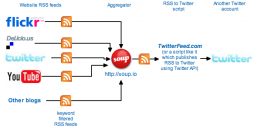nonprofit
Posted by KatrinVerclas on Jan 27, 2009
Allyson Kapin from Women Who Tech asked me to respond to some excellent questions about mobile campaigns for advocating for specific social issues. As I just received two text messages from NARAL and the Planned Parenthood Federation of America promoting two campaigns they are running, I thought I take the opportunity to answer Allyson's questions publicly, drawing on my experience and observations of the last few years of mobiles in advocacy, illustrating what works and what is better avoided in using mobiles in advocacy campaigns. This is, by nature of the question, somewhat US-centric. A follow-up article will focus on mobile campaigning in the Global South to differentiate some of the key issues.
How can integrating mobile technology benefit online advocacy campaigns?
Posted by CorinneRamey on Feb 11, 2008
Claire Joyce Tempongko, a Filipina immigrant, was murdered by her ex-boyfriend in front of her two young children five years ago. Tempongko had repeatedly tried to get help from state services -- she had called the police before, and her ex-boyfriend had been in jail for domestic violence -- but she was murdered despite the involvement of various services.
Immigrants like Tempongko repeatedly face language and cultural barriers to getting help from domestic abuse. Tempongko's murder was one of the factors that eventually led to a new translation program which was recently implemented by the city of San Francisco in California in the western United States. The new program brings translation services to non-English speaking victims of domestic violence in over 170 languages, all via mobile phone.
Jill Tregor, a Senior Policy Analyst with the San Francisco Department on the Status of Women, sat down with MobileActive for an interview.
Posted by KatrinVerclas on Jan 16, 2008
In a series of posts about Twitter for organizations, guest blogger Nate Ritter gives an overview of the benefits and pitfalls using Twitter. And because he is a geek, he's got an aggregator at the ready... (Modified and posted with permission from Nate's blog.)
My experiences in the San Diego fires in Southern California in late 2007 gave me an interesting outlook on how Twitter, as a tool, could be applied in different circumstances. For those of you not in the know: Twitter is a "free social networking and micro-blogging service that allows users to send "updates" (or "tweets"; text-based posts, up to 140 characters long) to the Twitter website, via short message service, instant messaging, or a third-party application such as Twitterrific" according to the Wikipedia. Just a few months after (and some even during) the 2007 firestorm some organizations are scratching the surface of what’s possible with this service.
Twitter is a tool. It’s a good one in some cases and and for some organizations, and useless for others. Don’t make Twitter the hammer and start looking at everything like a nail. Twitter does some things very well, but it doesn’t fit every organization’s goals. Here are some considerations that will help determine if Twitter could be useful for your organization. If one of these criteria benefits your community without too many hurdles for adoption, then Twitter might be the right tool for you.
Posted by KatrinVerclas on Jan 15, 2008
The Direct Marketing Association's Nonprofit Federation, the trade association of nonprofit marketers in the United States, is rolling out a text messaging pilot program with discounted rates with Mobile Cause, a vendor focused on nonprofits.
According to Senny Boone, quoted in a DMA newsletter: “We've been paying attention to what's happening with text messaging and the younger generations." The article goes on: "Many nonprofit organizations [are] “looking at younger donors and how to gain their support now and having them continue to support in the future.” The new program is a way to encourage members to take a closer look at this method of fundraising and test its potential." According to Boone, “In Europe, there's already been a lot of success with text messaging and raising funds.”


